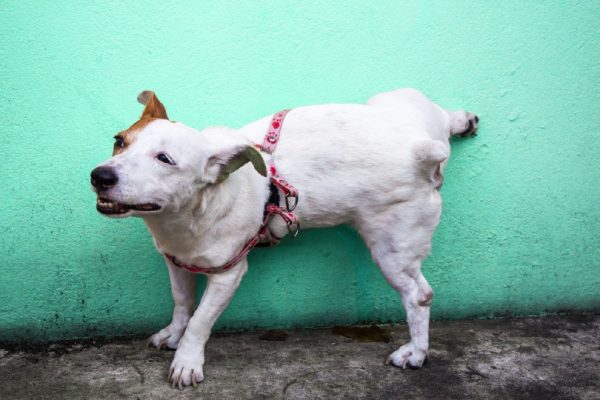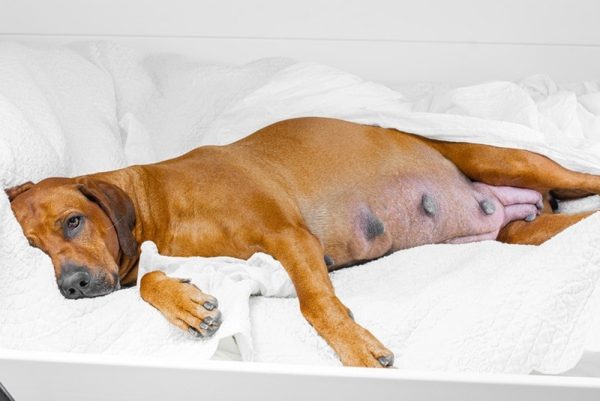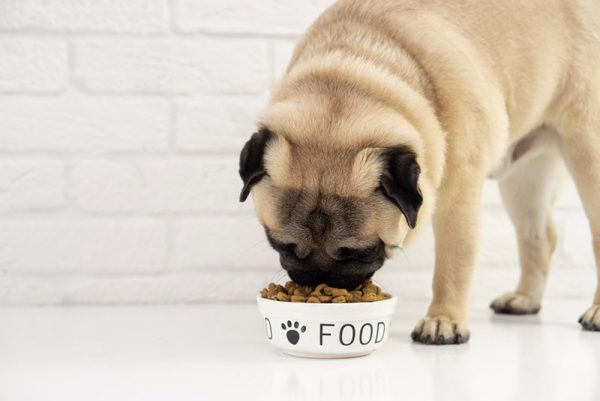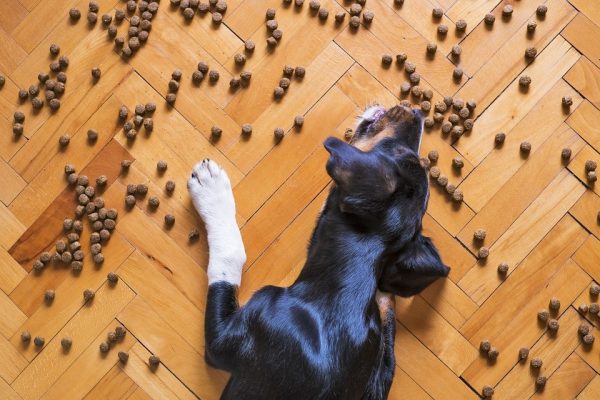With beach reading season right around the corner, it’s the perfect time to start building your summer reading list. If you’re a dog lover in need of a few new books to add to your TBR (to be read) list this year, we have you covered. We’ve compiled a list of the 10 best books for dog lovers spanning genres such as memoir, fiction, non-fiction, and photography-based, so there’s something on this list for everyone. Read on to discover our reviews of these fantastic books so you can start building your TBR today.
In this article

A Quick Comparison of Our Favorites in 2025
| Rating | Image | Product | Details | |
|---|---|---|---|---|
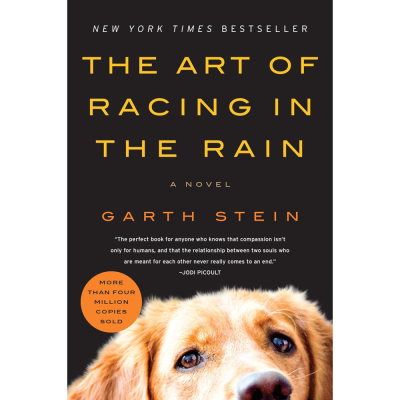
|
The Art of Racing in the Rain by Garth Stein |
|
Check Price | |

|
A Dog's Way Home by W. Bruce Cameron |
|
Check Price | |
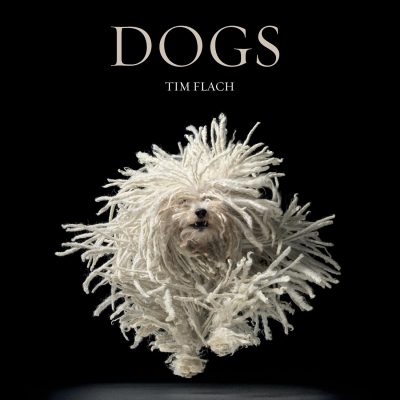
|
Dogs by Tim Flach |
|
Check Price | |

|
A Dog's Purpose by W. Bruce Cameron |
|
Check Price | |
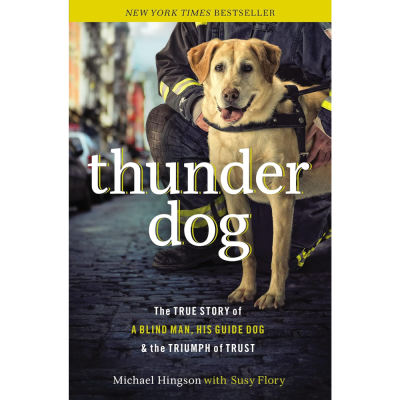
|
Thunder Dog by Michael Hingson |
|
Check Price |
The 10 Best Books for Dog Lovers
1. The Art of Racing in the Rain by Garth Stein– Best Overall
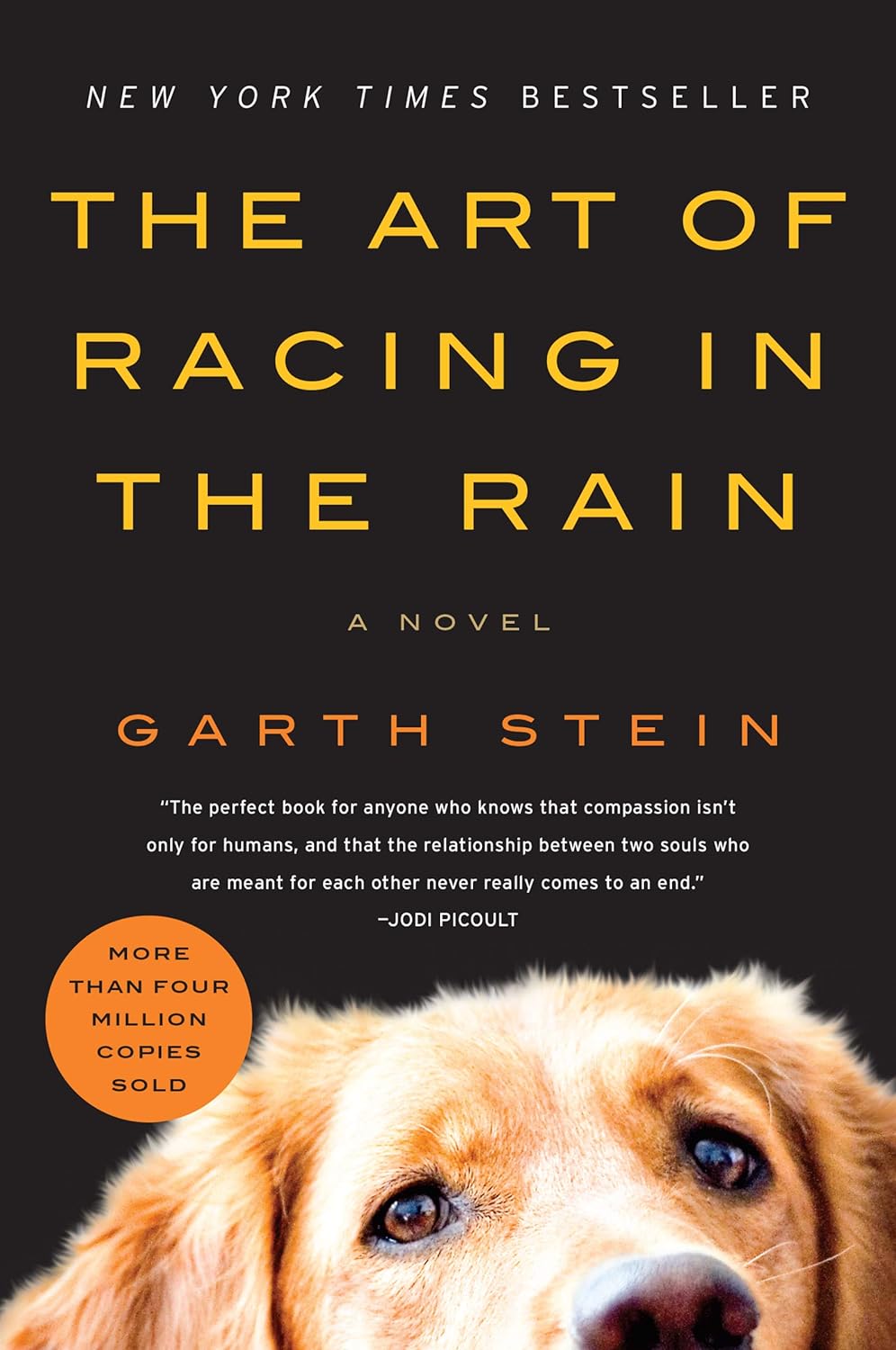
| Length: | 321 pages |
| Publication Date: | January 1, 2008 |
| Genre: | Fiction |
The Art of Racing in the Rain is a 2008 novel narrated by a mixed-breed dog named Enzo. It was a New York Times bestseller for 156 weeks, and a film adaptation with some pretty big names (Amanda Seyfried, Milo Ventimiglia, and Kevin Costner, to name a few) was released in 2019.
Enzo has a human soul and a keen eye for detail. He watches television and listens very closely to the words of his up-and-coming race car driver owner, Denny. Enzo believes that dogs will be reincarnated in their next lives as humans, and that’s what the book is about—Enzo preparing for his next life.
This is an emotional, inspirational, and heartwarming read, as evident in the first chapter.
2. A Dog’s Way Home by W. Bruce Cameron

| Length: | 336 pages |
| Publication Date: | May 9, 2017 |
| Genre: | Fiction |
If you’re dying to read a good dog book but don’t have the money to spend on an expensive one, you’ll want to check out A Dog’s Way Home by W. Bruce Cameron. The paperback version of this novel is available at a very affordable price, making it the best book for dog lovers for the money.
This novel follows a mixed-breed dog named Bella, who is incorrectly tagged as a Pitbull. Bella narrates the story as she journeys back home to her human after she is separated from him due to the Pitbull ban in their city. Bella must travel 400 miles to reunite with her owner.
This heartwarming tale is a classic story of a dog’s unwavering loyalty and unparalleled devotion. It explores the unbreakable bond between man and his pets and brings attention to animal abuse problems that are often overlooked and not talked about.
3. Dogs by Tim Flach
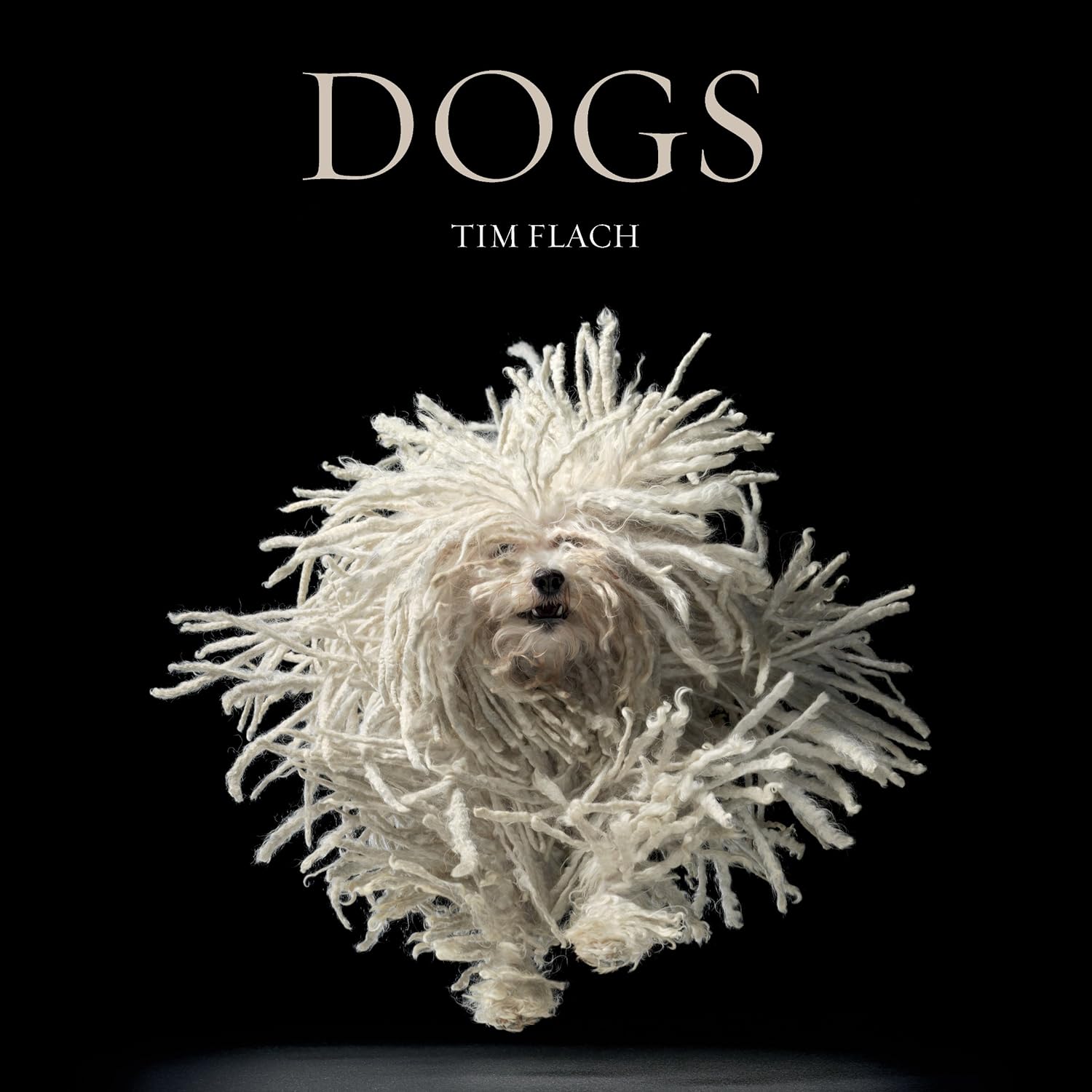
| Length: | 216 pages |
| Publication Date: | October 1, 2010 |
| Genre: | Photography |
While Dogs by Tim Flach doesn’t cost an excessive amount, it is significantly pricier than some of the others on our list, likely due to its high-quality images and hardcover design. This attractive coffee table book features photographs by Flach, a multi-award-winning photographer.
It contains pictures across the entire spectrum, including exquisite pups at the Westminster Dog Show and shelter dogs with their rescuers. This book is truly a piece of art and a stunning testament to the power of man’s best friend. However, some readers wished it had more commonplace breeds.
4. A Dog’s Purpose by W. Bruce Cameron
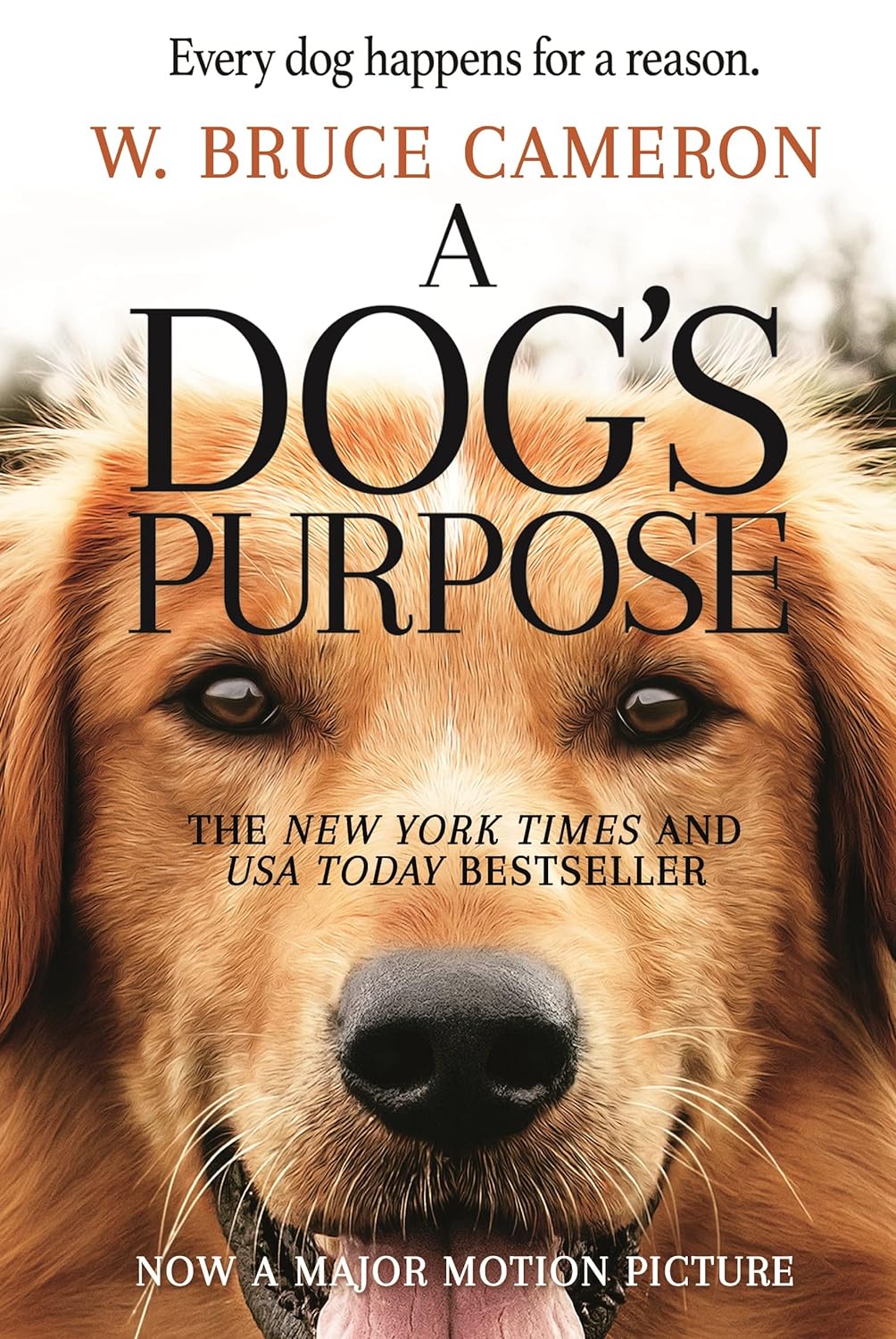
| Length: | 336 pages |
| Publication Date: | July 6, 2010 |
| Genre: | Fiction |
This book by W. Bruce Cameron is the first book in his A Dog’s Purpose series. A Dog’s Journey (2012) and A Dog’s Promise are the subsequent novels in the series. The book follows a dog’s journey through four lives via reincarnation and how he finds purpose in each of these lives. It was a New York Times bestseller for nearly 50 weeks and garnered critical praise. A film adaptation with the same name was released in January 2017.
A Dog’s Purpose is a heartstring-pulling, touching, and thought-provoking.
5. Thunder Dog by Michael Hingson
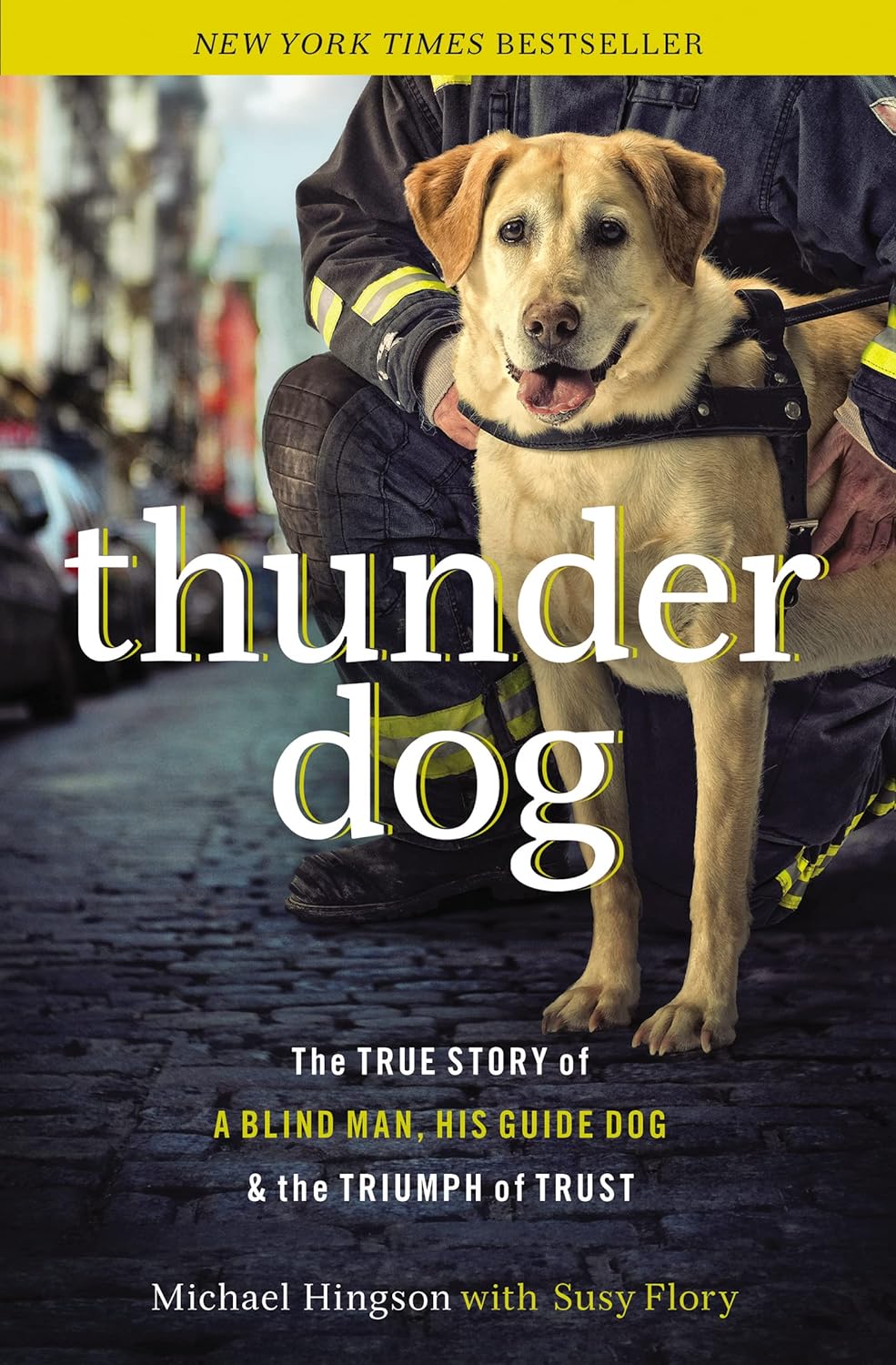
| Length: | 256 pages |
| Publication Date: | July 1, 2011 |
| Genre: | Memoir |
Thunder Dog is a New York Times bestseller based on the true story of a blind man and his dog, Roselle. The novel takes place partly on September 11th and tells a story of survival as seen through the lens of a blind man. The novel provides a unique point of view of 9/11 that hasn’t yet been explored, but this isn’t a 9/11 book. There are a lot of backstories, and it is much less about Roselle than most dog lovers would like.
6. Marley & Me by John Grogan
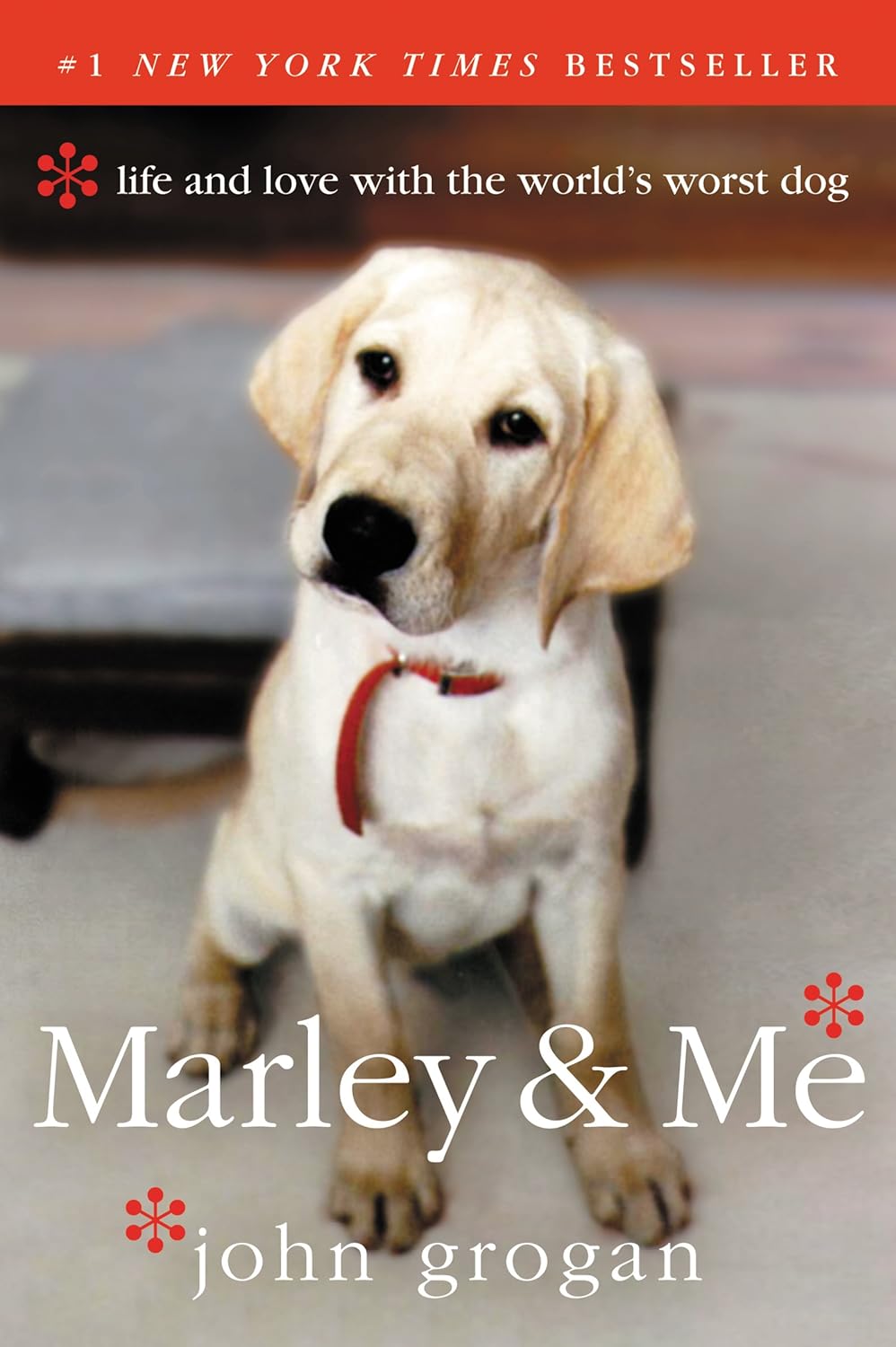
| Length: | 320 pages |
| Publication Date: | March 11, 2008 |
| Genre: | Memoir |
Marley & Me is an autobiographical book about John Grogan’s life with his Labrador Retriever, Marley. This dog is very naughty and destructive, and Grogan’s book explores the issues that Marley’s poor behavior causes his family, as well as the lessons they learn along the way. Even though Marley destroyed screen doors and drywall, his love and devotion toward his family were boundless.
Marley & Me also explores the grief Grogan’s experience in the wake of Marley’s death due to gastric dilatation volvulus. The novel was adapted into a film of the same name starring Owen Wilson and Jennifer Aniston.
7. Inside of a Dog: What Dogs See, Smell, and Know by Alexandra Horowitz
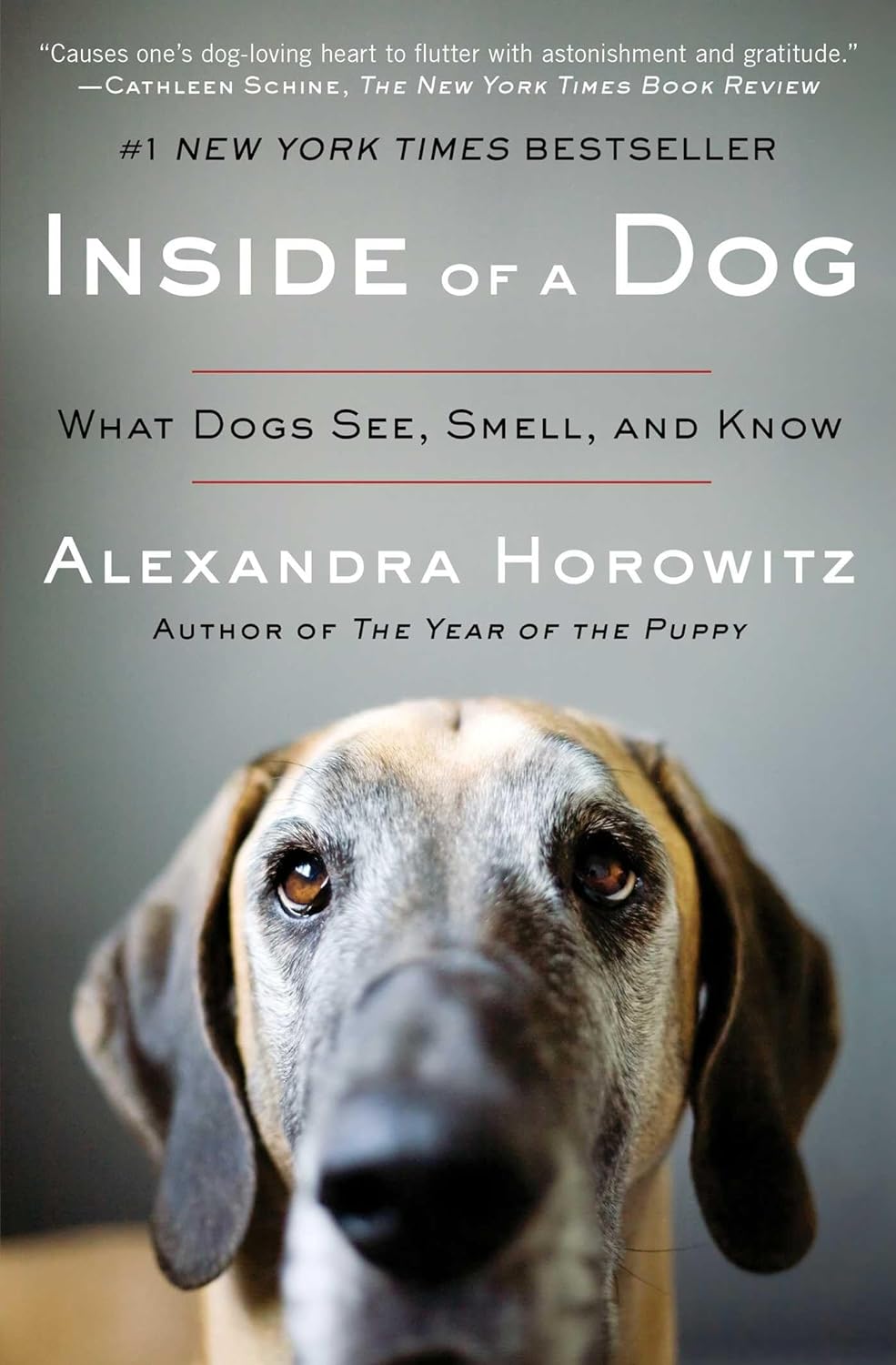
| Length: | 384 pages |
| Publication Date: | January 1, 2009 |
| Genre: | Training/Psychology |
Inside of a Dog was on the New York Times bestseller list for 64 weeks. It’s an informative guide that explores dogs’ cognitive processes and how they perceive their daily activities. The author, a cognitive scientist, provides valuable insight into what it might be like to be a dog. The book is written in crisp prose and contains up-to-the-minute research and insight.
The book ping-pongs between excessively scientific jargon and cute anecdotes, which may feel jarring for some readers.
8. Arthur: The Dog Who Crossed the Jungle to Find a Home by Mikael Lindnord
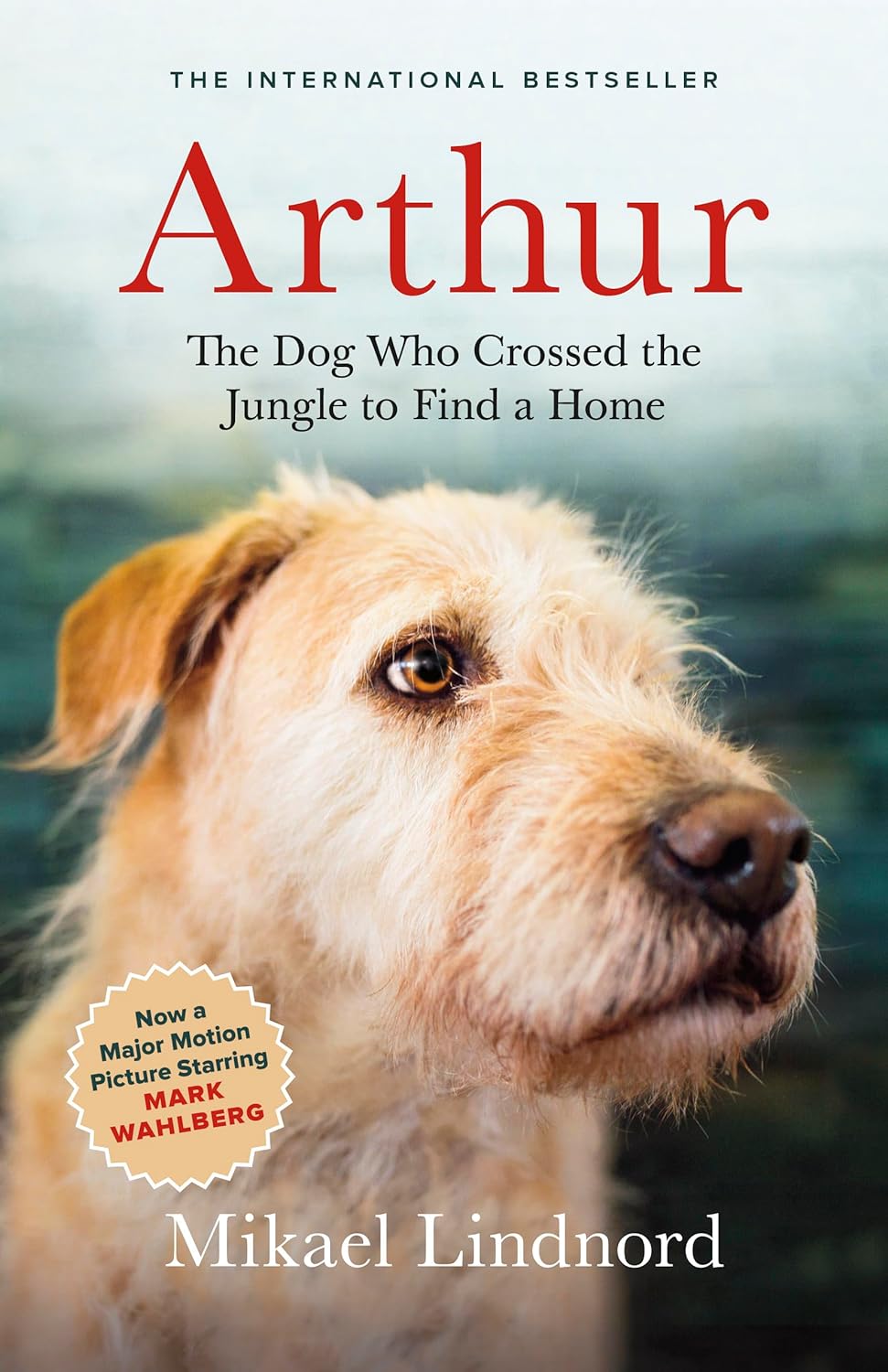
| Length: | 288 pages |
| Publication Date: | May 19, 2016 |
| Genre: | Memoir |
Arthur: The Dog Who Crossed the Jungle to Find a Home is a true story about the author, Mikael, and a dog who stumble across one another during an Ecuadorian adventure race. As with many of the other books on our list, this memoir has been adapted into a film. Arthur the King is a brand new 2024 release starring Mark Wahlberg.
The story follows the unlikely duo as they cross rivers, battle illnesses, overcome injuries, and traverse some of Earth’s most challenging terrain. It tells a tale about love, strength, and determination. Best of all, unlike many of the others on our list, it has a happy ending.
9. Underwater Dogs by Seth Casteel
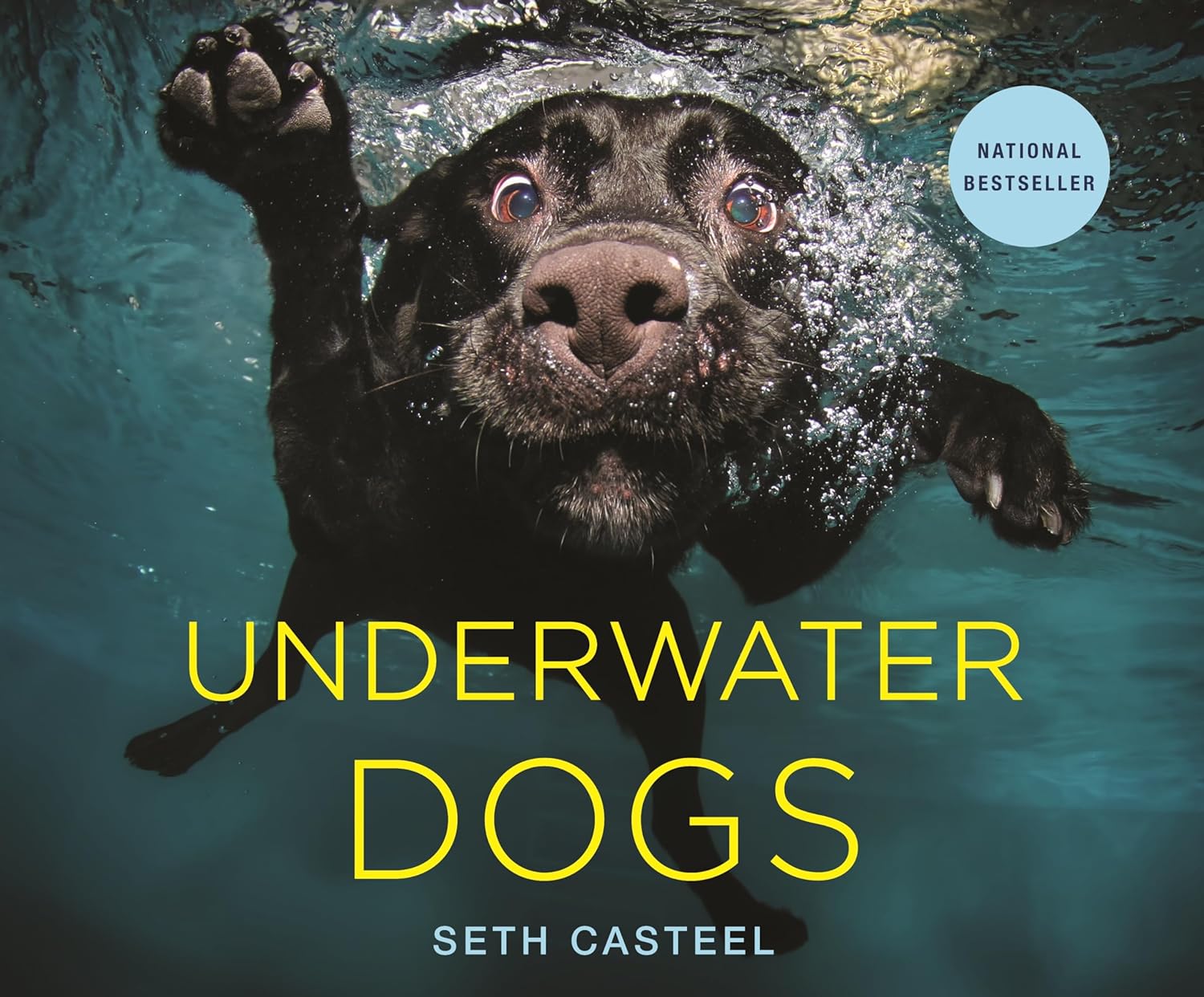
| Length: | 132 pages |
| Publication Date: | October 23, 2012 |
| Genre: | Photography |
Underwater Dogs is a fun coffee table book that contains the content you’d expect from a book with that title. The author, Seth Casteel, went viral in 2012 when images he took of dogs swimming underwater were posted on Reddit and the now defunct Google+.
When his website traffic increased to hundreds of thousands of views daily, Casteel released a book containing his photographs. It became a New York Times Bestseller and was the best-selling photography book of 2012. The book contains over 80 high-quality, playful portraits of man’s best friend underwater but doesn’t contain much text.
10. Pawverbs for a Dog Lover’s Heart by Jennifer Marshall Bleakley
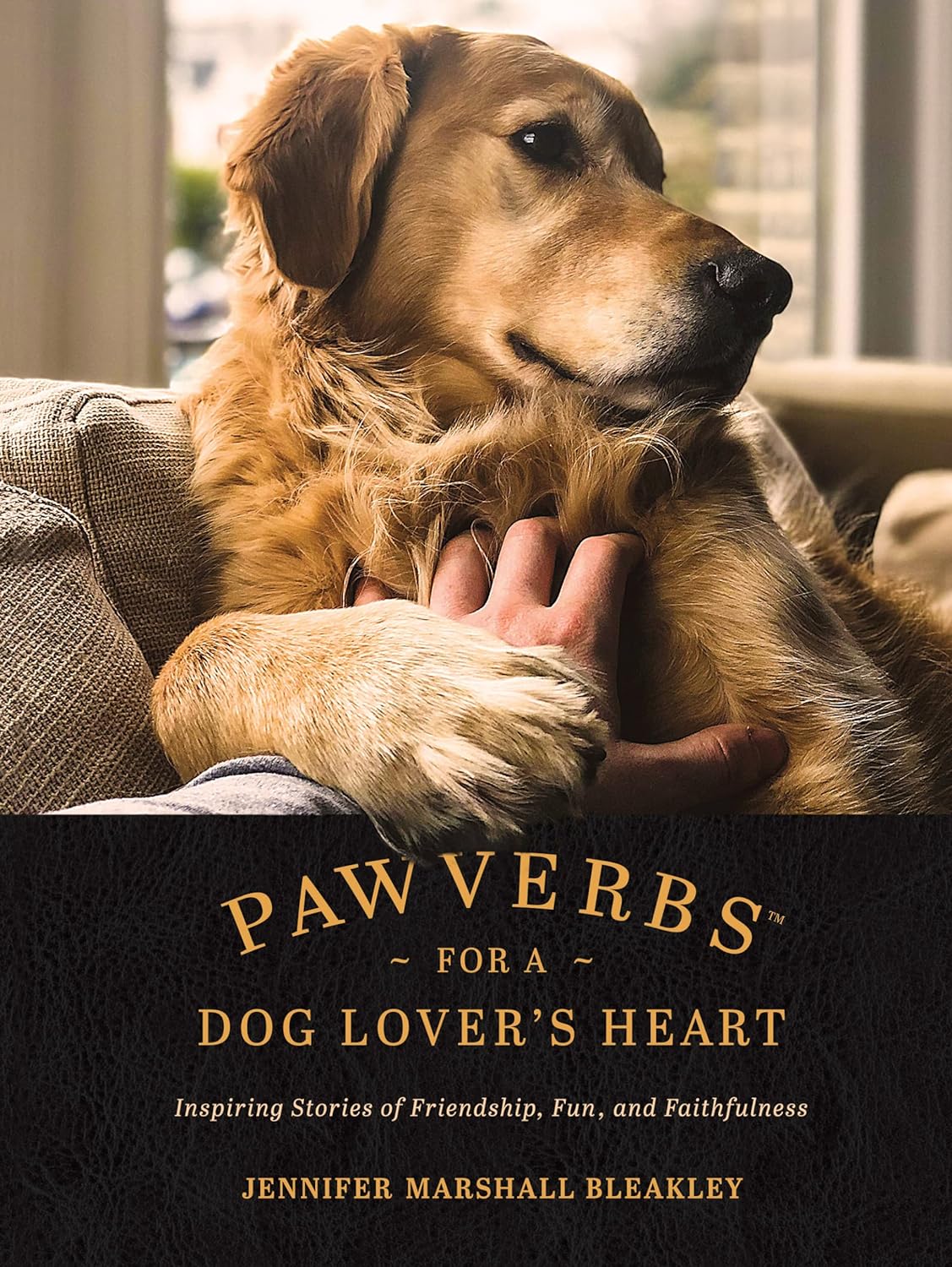
| Length: | 256 pages |
| Publication Date: | September 8, 2020 |
| Genre: | Spiritual |
The author of Pawverbs for a Dog Lover’s Heart gathered several beautiful and heartwarming dog stories and packaged them in one inspiring read. Each story is accompanied by images, a principle from the book of Proverbs, and prompts to help the reader “paws and ponder.” The content of each story varies; some are funny and cute, and others are sad. All the stories are short and easy to read. As you may have guessed by the title, this is a religious book.

Buyer’s Guide: How to Choose the Best Book for Dog Lovers
Genre
The books we reviewed above fall into various genres. Some are non-fiction, memoir-style reads, while others are books of photography or anthologies. Some are science-based, and others are fiction. We don’t know which genre you like to read, so we felt including various options in our list was important.
Readability
One of the most important things when buying any book, regardless of genre, is its readability. Despite getting fantastic reviews on websites like Amazon and Goodreads, some books are just hard to digest. The authors include unnecessary jargon or write in a language that won’t keep you interested for long.
Appearance
As readers, we all know we should never judge a book by its cover, but in some cases, you need to. Our list includes several hardcover options meant to act as coffee table books. By definition, coffee table books are to be displayed on a table where you entertain guests and act as a conversation starter.
A visually appealing option with colorful images makes a much better coffee table book than one that’s black and white and only consists of text. The best coffee table books consist predominantly of high-quality images and illustrations, with very small blocks of text spread throughout.
Our Selection Process For Best Book for Dog Lovers
To create this buyer’s guide, our writing team and editorial staff checked customer reviews, brand reputation, and veterinary approval ratings to present the book for dog lovers we think should be highlighted for our readers. In some cases, we conducted hands-on testing along with seeing how much our dogs liked the book for dog lovers. All these factors were considered when selecting these listed book for dog lovers to help you make the best purchase for your furry friends.
Why Trust Dogster?
Since 2004, Dogster has been a trusted brand for dog owners online, which means we have a lot of experience with book for dog lovers. We take pride in promoting the well-being of all dogs—from toy breeds to giant canines. Our in-house veterinarians, writers, and editors examine each product on our lists, ensuring its quality and reputation. As pet owners ourselves, we only want the best for our furry companions. At Dogster, we are transparent about the products we promote. The nutritional information, overall brand reputation, and customer reviews are all considered for these lists. We inform you how we want to be informed.

Conclusion
Only you know what type of book you like best, but we hope our reviews of the best books for dog lovers have provided you with some ideas to add to your “to be read” list this year. It can be hard to start with just one, so we recommend choosing two from different genres to get the best of both worlds. Happy reading!
Also see:
- Best Books for New Dog Owners – Reviews & Top Picks
- 10 Great Dog Books for Kids: Our Favorites Based on Age
Featured Image by: Vitaly Gariev, Pixabay








